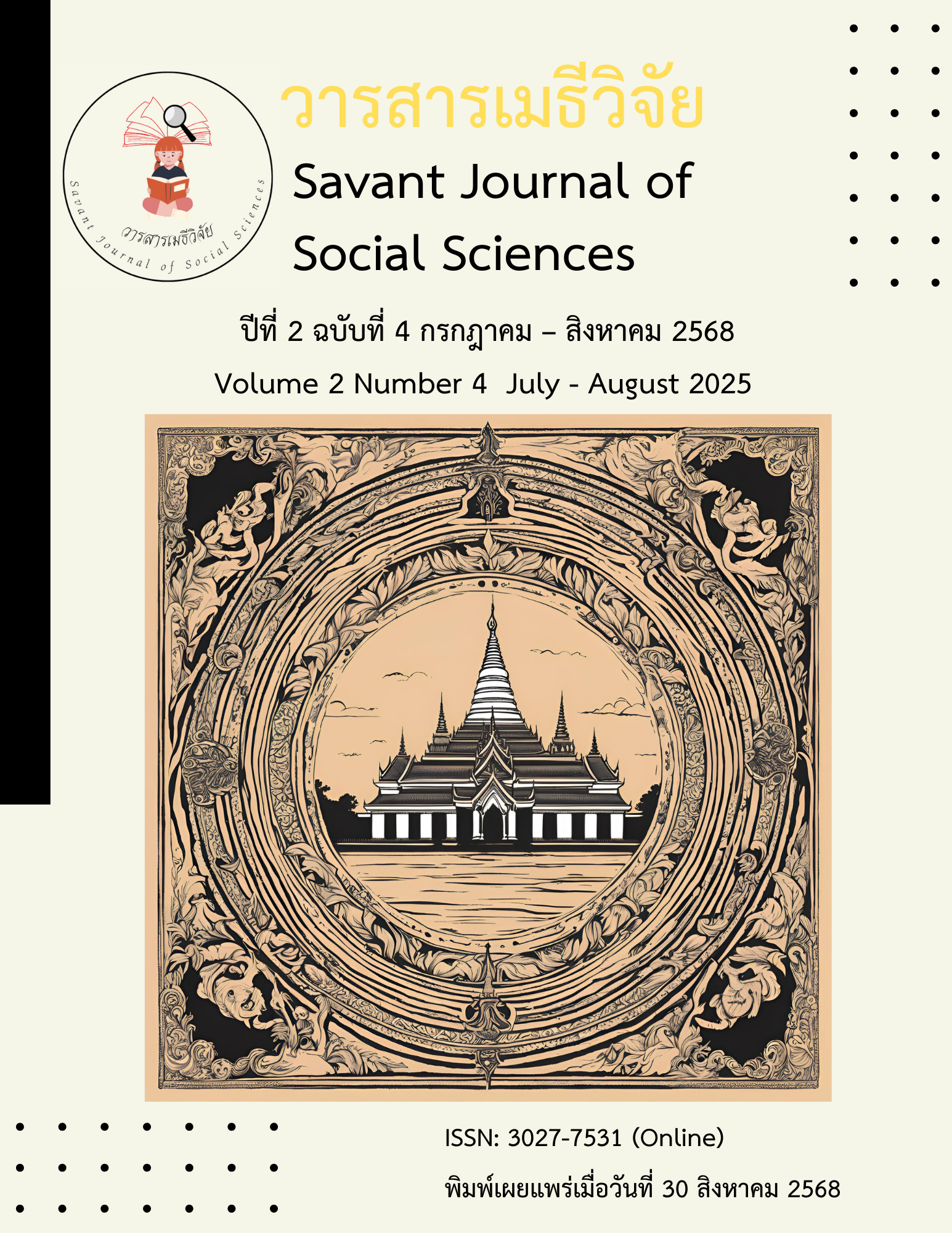Guidelines for teaching supervision of teachers in the digital age under the Office of the Secondary Education Area Nakhon Ratchasima
Abstract
This research is a study of the supervision of teaching management of teachers in the digital age under the Office of the Secondary Education Service Area Nakhon Ratchasima. The objectives are 1) to study the current status of supervision of teaching management of teachers in the digital age under the Office of the Secondary Education Service Area Nakhon Ratchasima 2) to compare the supervision of teaching management of teachers in the digital age under the Office of the Secondary Education Service Area Nakhon Ratchasima classified by age group and size of the educational institution 3) to propose the supervision of teaching management of teachers in the digital age under the Office of the Secondary Education Service Area Nakhon Ratchasima by using the ready-made table of Krejci and Morgan and stratified sampling according to the proportion of administrators and teachers and the size of the educational institution. The total sample size is 354 people. The research instrument is a 5-level rating scale questionnaire with a consistency index between 0.60-1.00 and a questionnaire reliability value of .898. The statistics used for data analysis include percentage, mean, and standard deviation. And One-Way ANOVA summarized the research results as follows. The research results found that
- 1. The level of opinions on the current situation of teaching supervision of teachers in the digital age under the Office of the Secondary Education Service Area Nakhon Ratchasima was at the highest level overall.
- Work experiences and practices according to different sizes of educational institutions had different views on teaching supervision of teachers in the digital age under the Office of the Secondary Education Service Area Nakhon Ratchasima, overall with statistical significance at the .05 level.
- The guidelines for teaching supervision of teachers in the digital age under the Office of the Secondary Education Service Area Nakhon Ratchasima, consisted of 5 aspects: 1) Communication with learners 2) Learning management 3) Measurement and evaluation 4) Use of digital technology and 5) Creating collaboration in the classroom
References
ชานนท์ คำปิวทา. (2565). รูปแบบการบริหารเพื่อส่งเสริมการจัดการเรียนรู้ในยุคดิจิทัลของครูโรงเรียน
มัธยมศึกษา. การศึกษาดุษฎีบัณฑิต สาขาวิชาการบริหารการศึกษา คณะศึกษาศาสตร์ มหาวิทยาลัยนเรศวร.
ปิยะธิดา ช่างประเสริฐ. (2564). การพัฒนารูปแบบการนิเทศเพื่อส่งเสริมการจัดการเรียนรู้ของครูที่สอน
นักเรียนที่มีความบกพร่องทางการเรียนรู้. ปริญญาครุศาสตรมหาบัณฑิต สาขาวิชาหลักสูตรและ
การสอน คณะครุศาสตร์ มหาวิทยาลัยราชภัฏนครราชสีมา.
พิชญา ชูเพชร และสุจิตรา จรจิตร. (2560). การสังเคราะห์งานวิจัยเกี่ยวกับรูปแบบการบริหารสถานศึกษา
ที่มีประสิทธิผล. วารสารหาดใหญ่วิชาการ. 15(1). 1-10.
พิมพันธ์ เดชะคุปต์ และพเยาว์ ยินดีสุข. (2562). ทักษะ 7C ของครู 4.0. พิมพ์ครั้งที่ 5. กรุงเทพฯ :
สำนักพิมพ์แห่งจุฬาลงกรณ์มหาวิทยาลัย.
สุกัญญา แช่มช้อย. (2560). การบริหารสถานศึกษาในยุคดิจิทัล. พิษณุโลก : พิษณุโลกดอทคอม.
สำนักงานคณะกรรมการดิจิทัลเพื่อเศรษฐกิจและสังคมแห่งชาติ. (2560, 11 เมษายน). นโยบายและแผน
ระดับชาติ ว่าด้วยการพัฒนาดิจิทัลเพื่อเศรษฐกิจและสังคม (พ.ศ. 2561-2580). mdes.
https://www.mdes.go.th/law/detail/3770.
อ่องจิต เมธยะประภาส. (2560, 29 มีนาคม). E-Teacher คุณลักษณะของครูและนักเรียนในศตวรรษที่
SlidePlayer MCU. http://www.slideplayer.mcu.ac.th/?p=162.
Ally, M. (2019). Competency profile of the digital and online teacher in future education.
International Review of Research in Open and Distributed Learning, 20(2).
Fanreza, R. (2018). The quality of teachers in digital era. In Proceedings of the 5th.
International Conference on Community Development (AMCA 2018) N.P : Atlantis
Nessipbayeva, O. (2012). The competencies of the modern teacher. in 10th annual
meeting of the Bulgarian Comparative Education Society, June 12-15, 2012. Kyustendil, Bulgaria.
Redecker, C., & Punie, Y. (2017). European Framework for the Digital Competence of.
Educators: Dig Com Edu. Luxembourg: Office of the European Union.
Sharma, M. (2017). Teacher in a digital era. Global.Journal of Computer Science and
Technology. 17(3). 10-14.






